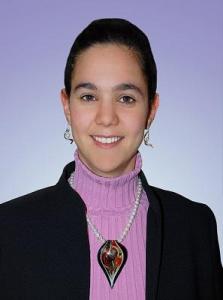I, too, received one of the graduate student travel fellowships to attend Science Writers 2010 at Yale in New Haven.
As a graduate student in Arizona State University's School of Life Sciences (SOLS), I study the interwoven fabrics of neuroscience, genetics and behavior. The journey from basic research at the lab bench to treatment at the bedside fascinates me.
I will be blogging about How to cover a medical conference: Tips from the pros at this year's convention. This session is slated to help one make the most of attending a medical conference by sharing details on sussing out the most newsworthy stories, knowing which sessions you can skip and the little known gems of medical conferences you don't want to miss.
I am keen to learn more about navigating my way through a medical conference successfully. As a honey bee researcher, I feel confident mingling with the 50,000 insects in a single hive. Studying social insects provides an interesting perspective on the mass interactions of individuals at a large conference.
ASU is home to one of the world's largest social insect departments. Just like the honey bees I study, I am hard at work. But instead of foraging for nectar or pollen, I am pursuing a PhD in biology, examining how pheromones effect bee behavior. At the same time, I am the Teaching Assistant for SOLS' Ask a Biologist, a nationally recognized site devoted to helping "K through Gray" explore the mysterious world of biology.
As a German Chancellor Scholar of the Alexander von Humboldt Foundation, I traveled over 50,000 miles by car throughout western Europe in 2006-2007 investigating the differences between European and American beekeeping. For a peek at pollinator photos from my travels, visit FlowersLoveBees.com.
A honey connoisseur, I also delved into the historic use of nature's first sweetener for wound healing. Hippocrates and Aristotle, amongst other great minds and medical practitioners, recognized the therapeutic potential of honey and applied it liberally to speed the healing process. During my stay in Germany, I coauthored an article with Dr. Arne Simon of the Pediatric Oncology Dept. of the Children's Hospital in Bonn about the resurgence of honey to treat superbug infected wounds.
In this month's issue of Scientific American Mind you will find my story Old & Wise on how honey bees help to explain the link between intelligence and long life.




